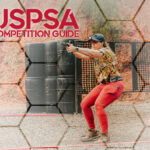
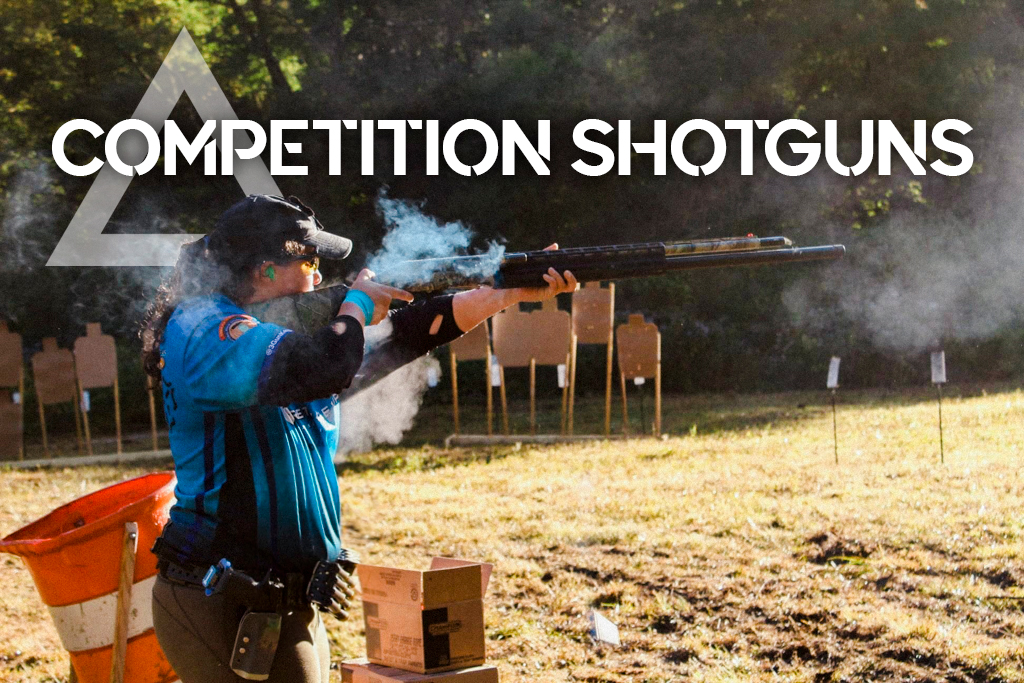
Guest Writer: Kenzie Fitzpatrick
Choosing a shotgun for competition is a process that only you can make the final decision on. It takes small tweaks and adjustments to fit a shotgun to your face, eyesight, and grip before you’re ready to compete. You should also enjoy the shotgun you’re shooting and be able to manage the recoil.
The variety of shotguns on the market can make it overwhelming to choose just one. As always, I recommend finding a range that rents guns to try before you buy. You can always ask a friend or visit a local gun shop that will let you rack the gun and get a feel for it.
Shotgun Competitions
Before deep-diving into choosing a shotgun for competition, you have to determine what type of competition you’ll be shooting. If you’re in college or about to attend a college, there are several trap and skeet organizations students can compete in.
Similarly, if you’re looking to get out and shoot local or national skeet and trap competitions, consider joining the National Skeet Shooting Association (NSSA) or the National Sporting Clays Association (NSCA). The Single Action Shooting Society (SASS) is all about shooting classic shotguns like single-shot pump action, side-by-side shotguns, and the notorious lever-action shotgun.
Lastly, suppose you’re looking to compete in 3 gun competitions. In that case, your choice will be between shooting a tube-fed shotgun with a magazine extension for more ammo capacity or shooting a magazine-fed shotgun where reloading is simplified.
Competition Shotgun Types
Pump Action Shotgun:
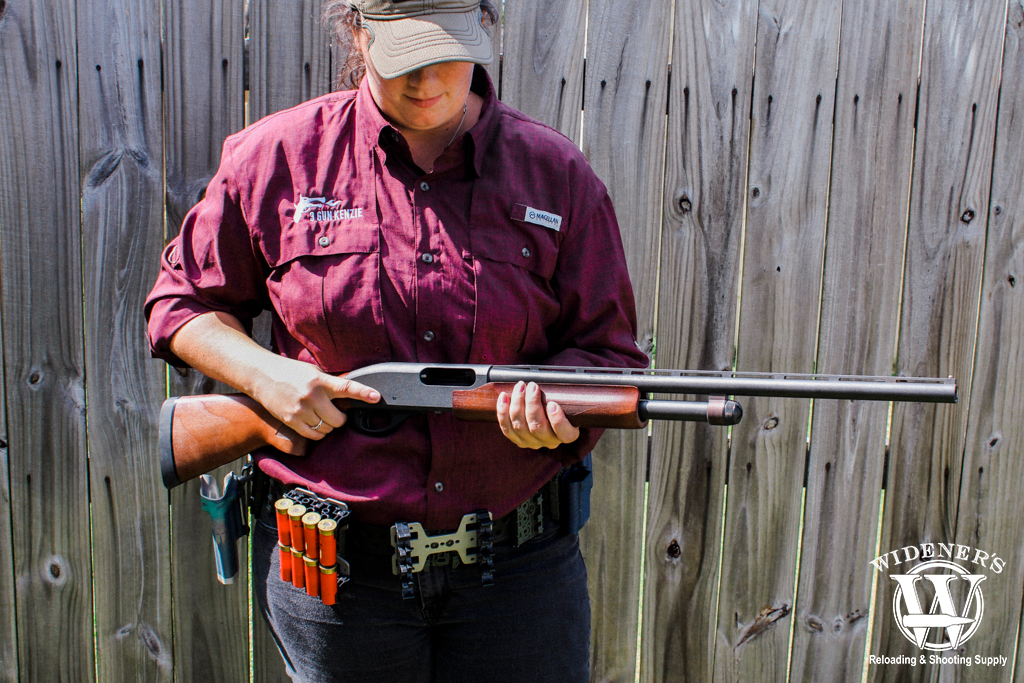
It’s hard to beat the reliability and classic design of a pump-action shotgun.
Pump-action shotguns are a lot of fun to shoot. The infamous Winchester Model 1897 is a popular option in Cowboy Action Shooting sports. Many people use pump action shotguns for home defense as the loud action is intimidating for intruders to flee before a shot ever being fired. For many, the pump-action is the first shotgun they’ve held or shot at a range. It makes for an easy platform to get started with competition shooting.
If you’re getting started in 3 gun competitions and own a pump-action, go shoot a match with it. I have seen shooters be competitive and load faster with a pump-action than a semi-automatic. The loading technique for a pump-action is a strong hand or weak hand 4-round load from a stacked shotgun shell caddy. This demo by Lena Miculek will walk you through it.
Recommended Pump Action Shotgun Models:
- Winchester Model 1897
- Browning BPS Field
- Remington 870 Fieldmaster
- Winchester SXP Black Shadow
- Stoeger P3000
- Benelli Nova
Semi-Automatic/Tube-Fed Competition Shotgun:
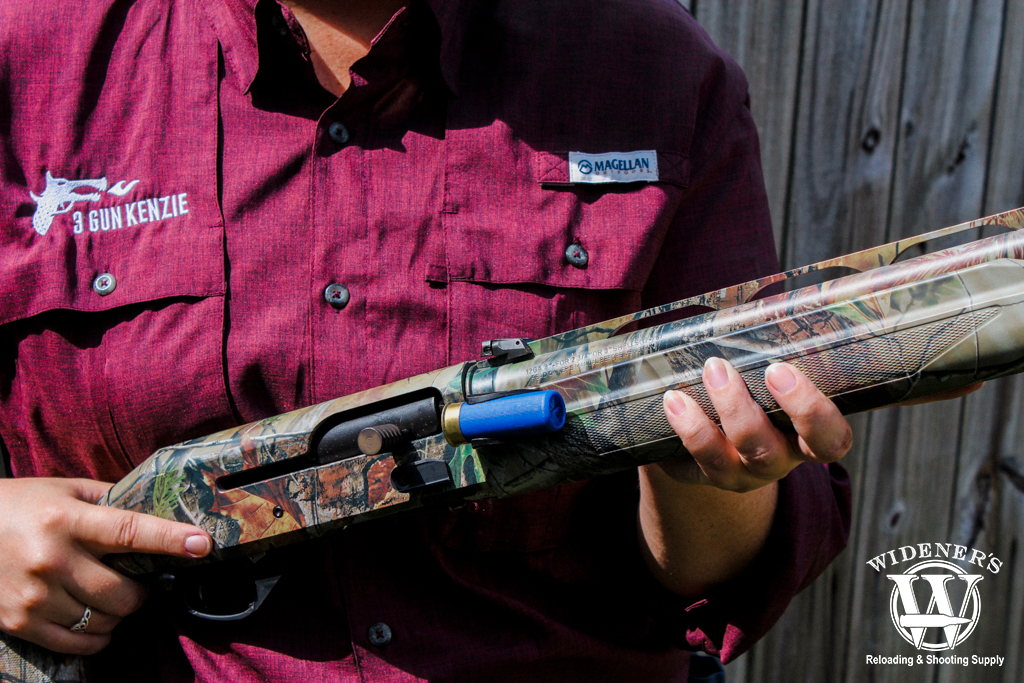
If you enjoy modern convenience, a semi-automatic shotgun might be the right choice for you.
A semi-automatic/tube-fed shotgun is the most popular option for shooting 3 gun competitions. With the development of the quad load technique, you can reload these fairly quickly. The key is capacity when choosing a shotgun for competition. In every division other than open, the capacity is 8 + 1 shells in the shotgun at the start of the stage. Tube capacity is increased with aftermarket extensions. If you can manage the weight, having the capacity to load 4 more shells in the tube (for a total of 12 in the tube) can give you a competitive edge. Your choice of shotgun ammo can also play a role here. If you’re using 3 inch shells, you may not be able to fit as many shells in as 2 ¾ shells.
When looking at semi-automatic options for 3 gun, factor in the cost of necessary upgrades that still have to be made to the shotgun to make it race-ready. The main upgrade is opening the loading port to be able to double or quad load. Not all shotguns will come with the extension tubes already on the gun. So acquiring a tube, a new spring, and nut may be must-have purchases. The other upgrades can include a lightened lifter to easily load, a low-drag follower, a rear sight added for slugs, and even a new trigger.
Recommended Semi-Auto Shotgun Models:
- Stoeger M3000 (or the dedicated 3-Gun model)
- Taran Tactical Innovations Benelli M2
- Beretta 1301 Competition Pro
- Mossberg 940 JM Pro
- Breda B12i
Magazine-Fed Shotgun:
While there aren’t as many magazine-fed shotgun options on the market as there is everything else, this option is for those competitors that hate reloading a shotgun. In 3 gun competitions, a magazine-fed shotgun will bump a shooter into the open division. Most shooters mount a red dot on this shotgun for easier target acquisition. This option allows shooters to shoot 5 to 20-round magazines so reloading on a stage isn’t as much as a tube-fed.
Recommended Magazine Fed Shotgun Models:
- Genesis Arms 3 Gun
- Dissident Arms KS-12 Elite
- Rock Island VR-80
- Saiga-12
- Tokarev TT 12.
- Fostech Origin 12
Over/Under Shotgun:
One of the biggest benefits of choosing an over/under shotgun is you’ll feel less recoil. Because the barrels are stacked, the shots deliver the recoil lower into the shoulder. This is as opposed to a side-by-side shotgun that delivers the recoil to the left and right on the shoulder. An over/under shotgun is also more accurate for follow-ups. The second shot is right under the top barrel making this gun an excellent choice for clay target competitions.
Recommended Over/Under Shotgun Models:
- Beretta 686 Silver Pigeon I Vittoria (Ladies Model)
- CZ All American
- Browning’s Citori 725
Side-By-Side Shotgun:
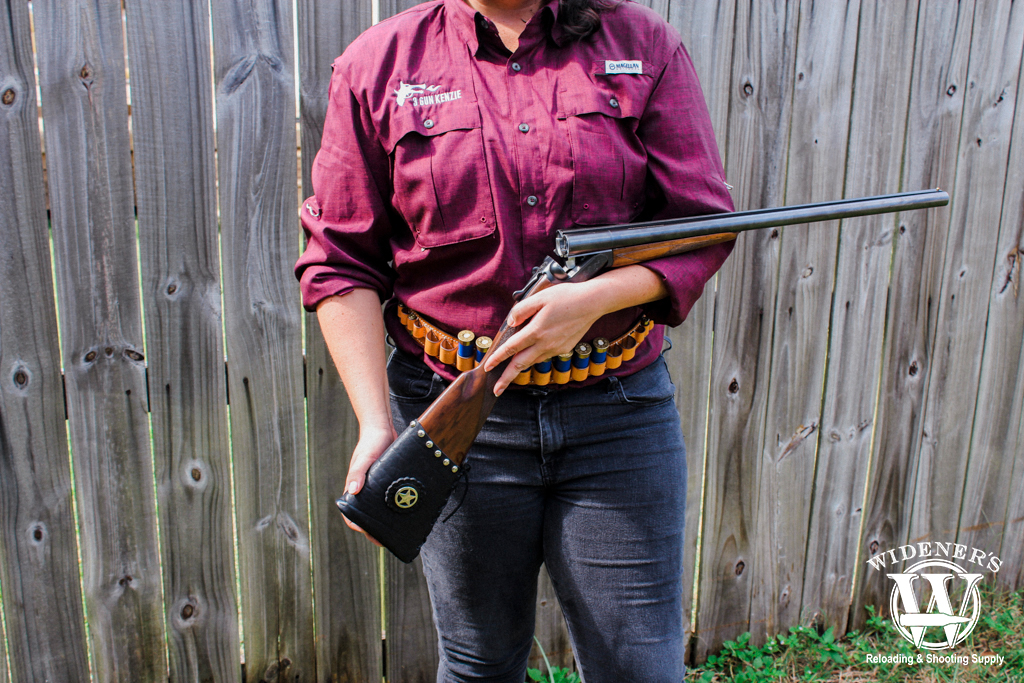
Don’t let the simplicity of the side-by-side design fool you, it’s one of the fastest models to reload on the fly.
Side-by-side shotguns are heavily used in the Cowboy Action Shooting sports. The reason for this is they are reloaded on the clock to shoot sometimes up to 6 or 8 targets on a stage. Reloading a side-by-side can be a lot faster than reloading a lever-action or single-shot pump action shotgun making this gun a competitive option when seconds count.
Recommended Side-By-Side Shotgun Models:
- SKB 100 double barrel
- CZ Sharp-Tail Target
- Bristol SxS (by TriStar)
- Beretta 486 Parallelo
Lever-Action Shotgun:
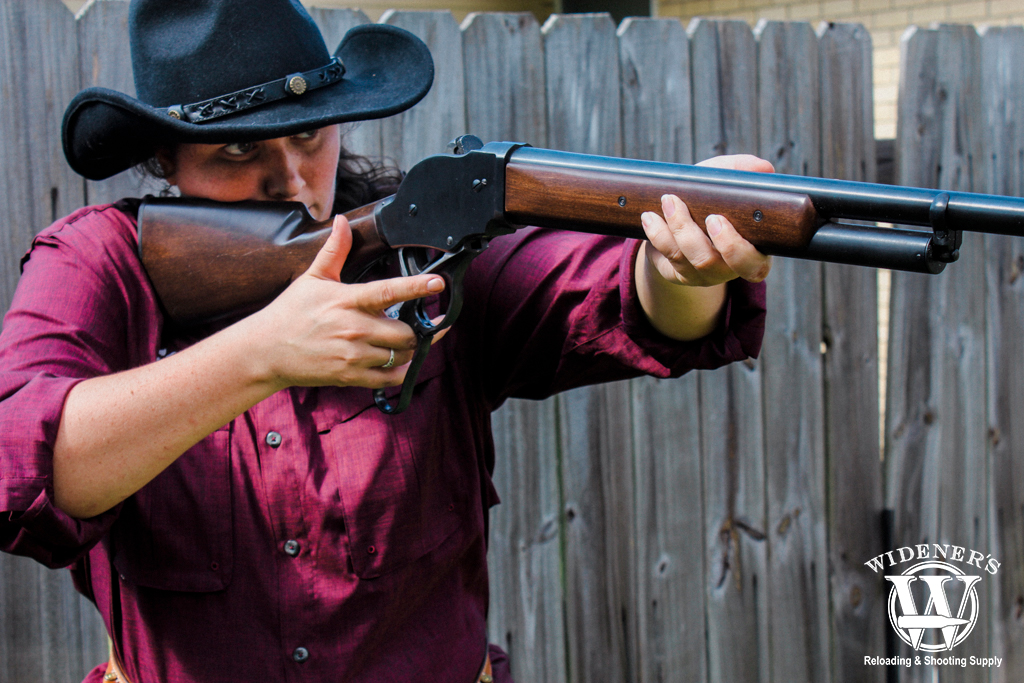
Sometimes simple is better. A lever-action shotgun is the perfect mix of size and comfort for many competitors.
Lever-action shotguns are rarely used in the Cowboy Action Shooting. However, many a cowboy can run a lever action faster than a side-by-side shotgun. Loading a lever action is a lot easier as well because it can be loaded with a strong or weak hand by grabbing two stacked shells and pushing them into the opening on top. If you’ve never tried to shoot one, they are a ton of fun, which is what shooting is all about!
Recommended Lever Action Shotgun Models:
- Winchester Model 1887
- Winchester Model 1901
- Cimmaron & Chiappa 1887 Versions
Competition Shotgun Features
Weight:
Not all shotguns are made lightweight and some shooters prefer a heavier shotgun for less felt recoil. It’s important you know the weight of the shotgun fully loaded to see if it’s something you can pick up. This is especially true of the tube-fed and magazine-fed shotguns.
Recoil:
Many junior shooters and smaller built women will start out with a 20 gauge shotgun instead of 12 gauge. The recoil difference between the two is a large enough difference that it can save your shoulder. Especially when it comes to shooting hundreds of rounds through the gun.
There are also two types of shotguns to consider when it comes to recoil management. You’ll want to decide on inertia driven shotguns vs. gas shotguns. One of the biggest issues with inertia driven shotguns is if you don’t mount the gun properly on your shoulder when you’re shooting, it can malfunction while cycling.
This is why shooters will prefer a gas shotgun since it doesn’t need this to operate. A gas gun will require more cleaning and will typically weigh more than its inertia counterpart. A lighter shotgun can add more felt recoil as well. Because a shotgun needs inertia, it can also have more felt recoil than the gas shotgun.
Comfort:
A competition shotgun should be comfortable for you to use day in and day out. When you first grip a shotgun, your wrist should not be in an unnatural position. The grip needs to be comfortable for you to get a purchase. The length of pull is the distance from the trigger to the center of the buttstock.
How do you determine a good length of pull? A rough estimate of a good length of pull is having the stock of the shotgun on your bicep at your elbow with your grip on the trigger without any adjustment. If the stock isn’t reaching your bicep, it may be too short. If you can’t reach the trigger group, the stock may be too long.
Competition Shotgun Barrel Length:
The barrel length is a bigger consideration in 3 gun shooting than any of the other competitions. This is because of the amount of movement required in the sport. A longer barrel like 28 inches will be more accurate and have tighter shot patterns. The downside to a longer barrel is added weight to the gun on top of the extended tube. With a long gun, swinging left to right and reloading can be harder to manage with the added length and weight.
How Much Should I Invest?
Cost is a huge factor when choosing a shotgun for competition. When you’re getting started in any competitive shooting sport, you’ll find the shooting community to be very generous. Competitors will often let you borrow guns before buying your own to see if you enjoy the sport. Once you know you enjoy the competition, upgrading to a more expensive and better working gun is typically the next step shooters take.
The base cost of a shotgun is almost never the only thing you’ll pay for. Depending on which shotgun and which competition you choose, you’ll want to buy a set of chokes. Pattern the shotgun to understand how those chokes change your impact. Depending on your stock and line of sight, you may add a cheek weld pad. Or you may need a gunsmith to make alterations to the stock so the shotgun will be suited to your face.
A stock shotgun almost never comes with competition sights. So a good addition to look into is adding fiber optic to the front side and even having a gunsmith install a rear sight for slug shooting. Decide on the gun and accessories you want, then budget so you can afford to buy them quickly.
Choosing A Competition Shotgun
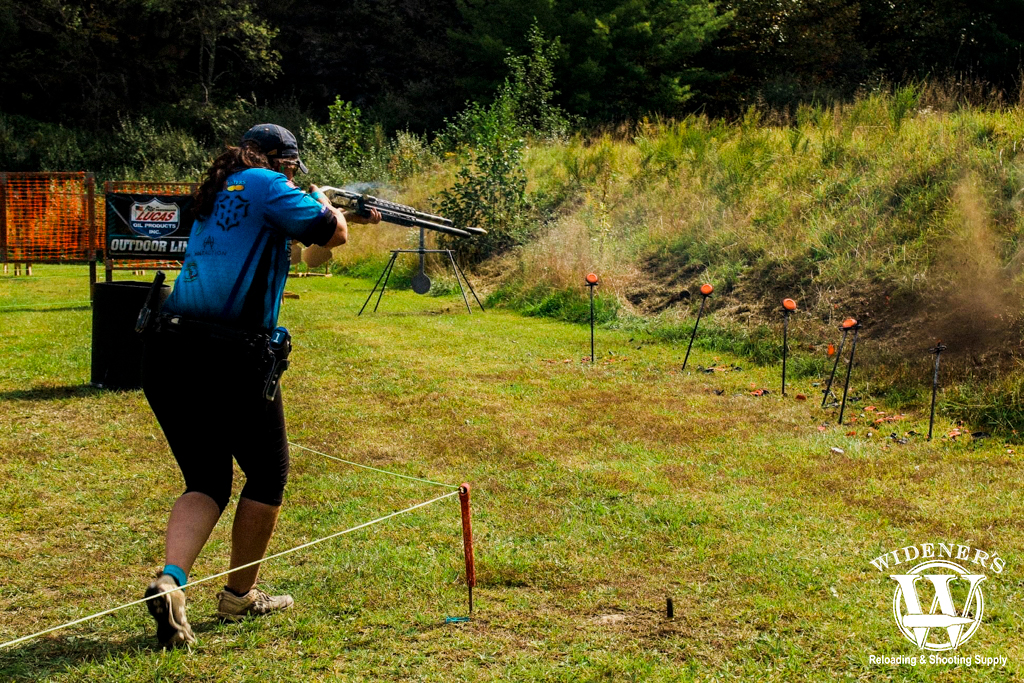
Pick the shotgun that best fits the style of your competition. Remember to have fun!
There isn’t a one-size-fits-all when it comes to choosing a shotgun for competition. Everyone’s body, face, line of sight, hand size, and more are not going to be the same.
I’ve been competing in shooting sports for 10 years now and I have watched cowboy action shooters with a lever action 12 gauge load faster than those using a pump action shotgun. I also know 3 Gunners who use a tube-fed shotgun who can quad load faster than some open magazine-fed shotgunners can even get their next magazine off of their belt.
At the end of the day, someone’s skill level and practice time with their gun of choice will always beat out a newer shooter who bought a “faster gun” but hasn’t spent much time shooting it.
Remember to have fun and enjoy the sport you choose with the shotgun you end up with. After all, scatterguns are a blast to shoot!


